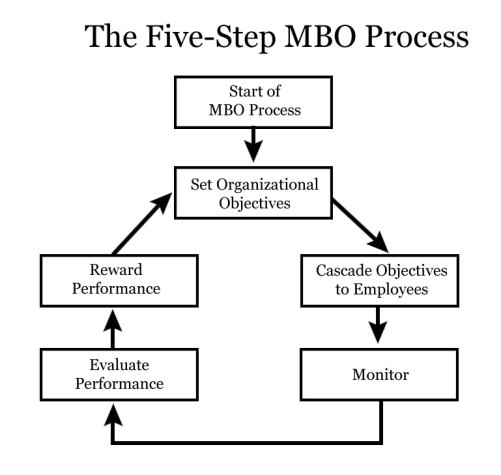Four different types of organization structures have been identified for managing the tasks of the organization. These are (i) a centralized functional structure, (ii) a decentralized divisional structure, (ii) a hybrid (matrix) structure, and (iv) network/coupling structure. An important aspect in the design of management control systems is that it should be linked with responsibility centers. Because of this intimate linkage between the control system and the organization structure, it becomes important to know about key control considerations in the choice of an organization structure. Important parameters on the basis of which choice of the structure can be decided are (i) efficiency and effectiveness, (ii) economies of scale, (iii) problems of coordination, (iv) assignment of profit responsibility, (v) conflict and cooperation. Since efficiency is related to level of activity, as the level of activity increases efficiency also increases. Size permits the division of labor and specialization withinContinue reading
Management Concepts
What is a Multinational Corporation (MNC)?
A multinational corporation may be defined company that operates in more than one country. According to the United Commission, Multinational Corporations or Global Corporation is a corporation, which operates in addition to the addition in which; it is incorporated, in one or more other, countries. Such a corporation owns and controls, business in two or more countries. In the words of W H Moreland, “Multinational Corporations or Companies are those enterprises whose management, ownership and controls are spread in more than one foreign country”. In common usage, multinational corporations are also called global corporations and international corporations. While in general these terms may be used interchangeably, there are actually subtle differences between them. Global corporation and multinational corporation represent two extremes whereas International corporation falls somewhere between these two. In a global corporation production facilities are generally centralized. These are located in oneor two countries to get the advantage ofContinue reading
Features of Management By Objectives (MBO)
Management by Objectives (MBO) was first popularized by Peter Drucker in 1954 book ‘The Practice of Management’. Drucker drafted MBOs as an approach to get the management and employees to jointly set goals to achieve known as objectives. The main purpose for setting objectives was to give both the managers and employees a clear understanding of what they were expected to do in the organization in order to achieve the objectives set. The objectives were set during certain time periods which at the end of the period to evaluative performances are carried out to determine the extent to which the set objectives had been achieved. An example of an objective includes attaining a sales or profit target by the end of a financial year. In the modern world of business where gaining competitive over competitors has became one of the main goals by organization, Management by Objective has become oneContinue reading
Management by Objectives (MBO) Derivatives
One of the pre-requisites for effective implementation of Management by Objectives (MBO) is a clear thinking at the corporate level translated into long-term plans. Many organizations have over the years, implemented MBO and improved their operations and performance. Effective implementation of MBO requires a good reporting system. This is necessary for taking timely remedial action in case of deficiency is noticed in any area. As organization grows in size, this reporting system becomes complex and time consuming. It may not be possible for top management to directly supervise each and every activity at lower interested in critical activities rather than every activity. Thus, as a bye product of MBO, large organizations introduced what is called Management By Exception (MBE). In this management technique, higher levels of management will concentrate only on exceptional situations, i.e., critical areas. Both MBO and MBE are scientific forms of management. However, they can be successfulContinue reading
Management by Objectives (MBO) – Definition, Advantages and Disadvantages
Many approaches have been utilized to integrate individual and group goals with overall goals of the organization of an enterprise. Management by Objectives (MBO) is basically a process whereby the superior and subordinate managers of an enterprise jointly (i) identify its common goals, (ii) define each individuals major areas of responsibility in terms of results expected of him, and (iii) use these measures as guides for operating the unit (or enterprise) and assessing the contribution of each of its members. The goals are jointly established by the manager and his subordinates and agreed upon in advance. These goals emphasize either output variables or intervening variables, or some combination of both. At the end of the pre-decided time period, the subordinate’s performance is reviewed in relation to preset goals. Both superior and the subordinate participate in this review/evaluation. If, after evaluation it is found that there is some discrepancy between theContinue reading
Steps in Management by Objectives (MBO) Process
Management by objectives (MBO) is a systematic and organized approach that allows management to focus on achievable goals and to attain the best possible results from available resources. It aims to increase organizational performance by aligning goals and subordinate objectives throughout the organization. Ideally, employees get strong input to identify their objectives, time lines for completion, etc. MBO includes ongoing tracking and feedback in the process to reach objectives. Management by Objectives (MBO) was first outlined by Peter Drucker in 1954 in his book ‘The Practice of Management’. In the 90s, Peter Drucker himself decreased the significance of this organization management method, when he said: “It’s just another tool. It is not the great cure for management inefficiency.” The main features of MBO are: Management by Objectives is a philosophy or a system, and not merely technique. It emphasizes participative goal setting. It clearly defines each individual responsibility in termsContinue reading


